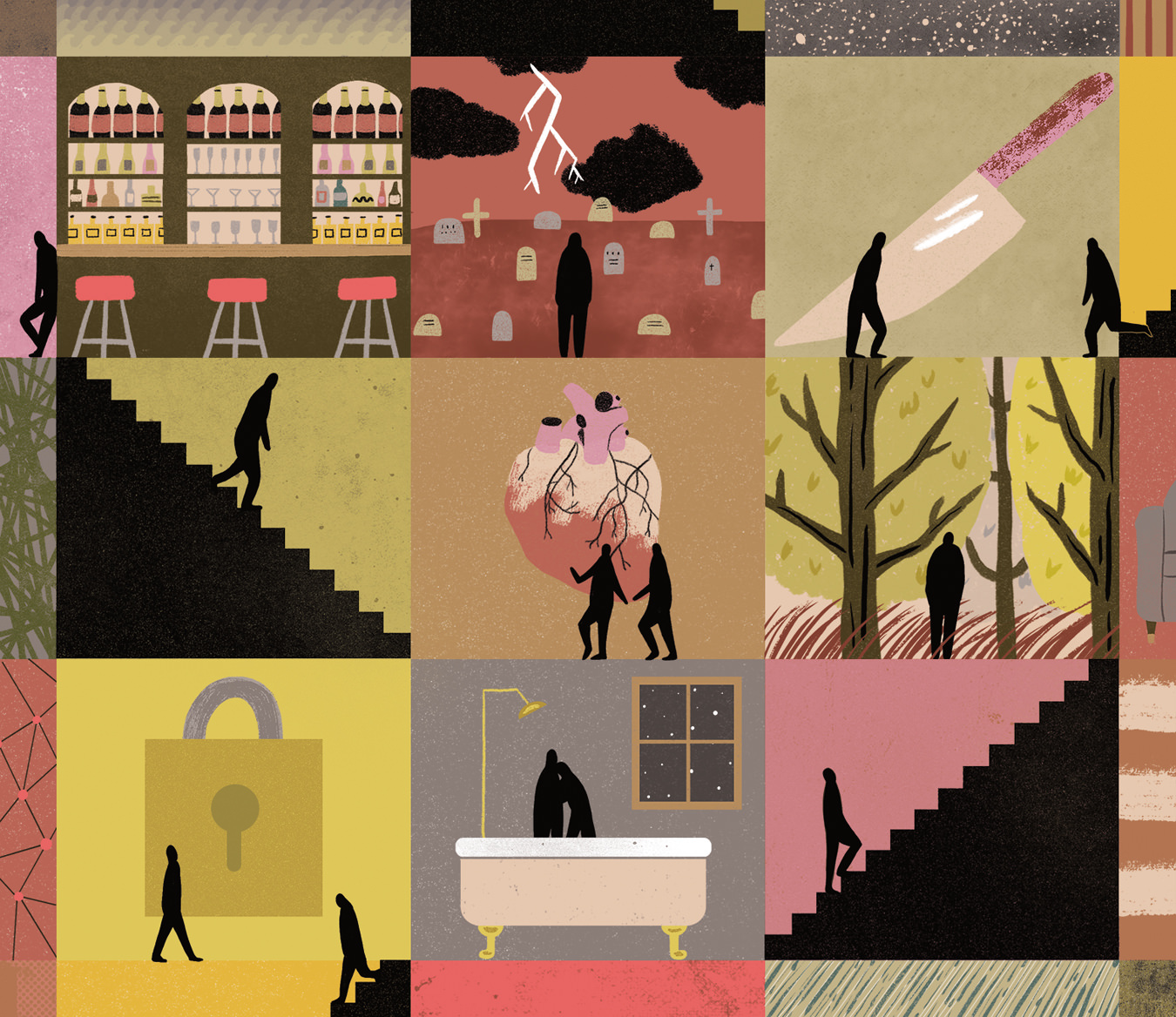Sleep No More
Art unexpected.

It began, as with so many epiphanies, with a conversation in a bar. I’d mentioned aloud that I was going to spend a week in New York when a fellow turned to me and spoke urgently across the din.
“Sleep No More. It’s a play—well, sort of, but you absolutely have to see it.” I raised an eyebrow, and he continued. “There’s no dialogue, and you wear masks. And there’s no stage—you wander around this massive building, and there are secret passages and hidden rooms, and you have to chase after the actors…”
It sounded nonsensical, like rantings born of a fever dream, but it was intriguing enough that I bought a ticket. And several weeks later, I waited in a thunderstorm for what would be one of the most phenomenal artistic experiences in my life.
Sleep No More is an immersive theatrical production in New York’s Chelsea district that takes place on a most remarkable “stage”. The actor’s in the show, which is loosely based on Macbeth, roam some 100 rooms, followed by audience members. (In a voyeuristic touch—and to more easily tell the actors from the observers—we are all of us masked, à la Eyes Wide Shut.) The actors perform in silence as scenes are set to recorded music that includes film soundtracks from the likes of Psycho and Mulholland Drive. The setting includes an autopsy room, a forest complete with a witch’s hut, a cemetery, and dozens of other locations. These sets themselves are part of the show, and the audience is encouraged to fully explore the incredibly detailed environment. You can read through letters and diaries, try a sweet at the fully stocked candy shop, and rummage through desk drawers. (I did, and spent 10 minutes trying to pick the lock on an intriguingly sealed box I found therein, to no avail.)
The notion of how to best approach the show is debated online; many advocate picking two or three characters and following them for the majority of the evening. I adopted a more perambulatory approach, meandering from room to room but breaking off and following anyone (in my case, a nurse, Lady Macbeth, and Hecate) who piqued my interest.
Of the many scenes I witnessed, one stood out in particular. Midway through the three-hour performance, I stumbled into a dilapidated bar with about a dozen other audience members. And there was Hecate: a woman wearing a beautiful crimson gown, lip-synching a heavily distorted recording of the song “Is That All There Is?” I watched from the shadows as she playfully picked up a knife and used the blade to reflect the light into the audience’s eyes, while the unsettling vocals (“If that’s all there is, my friends, then let’s keep dancing…”) echoed through the dusty room.
Did I fully grasp the story and characters of Sleep No More? Absolutely not. And that’s okay; my experience was absolutely enthralling and uniquely personal. Completionists might worry about not “getting” the story, but that’s not the point; you could attend a thousand times and get a different show each visit. The show haunted me, and I spent many nights trying to decide precisely why. My conclusion? It was something unknown, singular, and unexpected. And that’s a welcome rarity these days.
It made me realize just how unsurprised I am by most art I consume; it’s an uncommon anomaly to watch, listen to, or read something that hasn’t been at least somewhat spoiled by Wikipedia synopses or Metacritic consonance. Likewise, it occurs to me that ours is a culture burdened with almost infinite options and effortless accessibility; thanks to various streaming services, never before in history has so much art been available so cheaply. Has unlimited access led to intolerable excess? All I know is that I spend at least an hour a week idly browsing Netflix offerings, paralyzed with indecision and the ironic dread of wasting my time with substandard entertainment.
Maybe we should take a page from the Slow Food movement and pursue a sort of Slow Art: once a year, we subject ourselves to, say, Wagner’s Ring cycle in original German with no program, no translation, and no summary. Or perhaps we should just pay more attention to art unexpected, be it a busker on the street or a play randomly recommended or even just a song on the radio that seems to perfectly fit the moment, and practise absorbing it, enjoying it, and letting it wash over us, all without immediately craving what’s next.
All too often, we seem like the speaker in that song, asking repeatedly and obsessively, “Is that all there is?” Really, we have more than enough.




